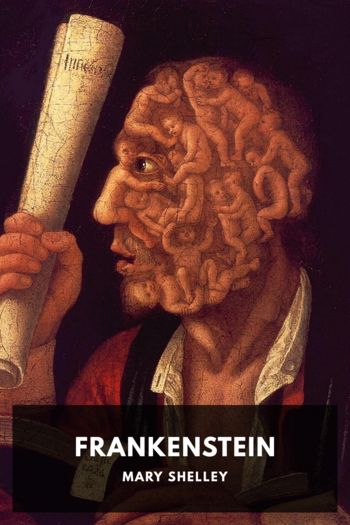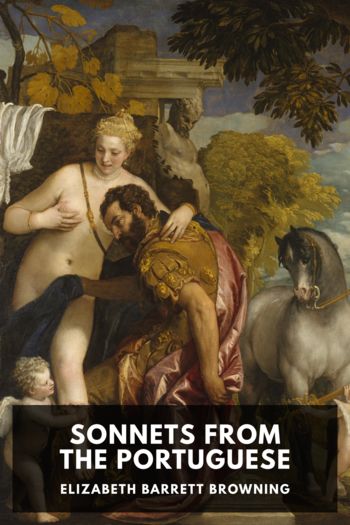Two-Way Mirror, Fiona Sampson [children's ebooks online .txt] 📗

- Author: Fiona Sampson
Book online «Two-Way Mirror, Fiona Sampson [children's ebooks online .txt] 📗». Author Fiona Sampson
Four days after the christening, the household – including Wilson, who’s become the baby’s nursemaid, the balia and Flush – set out for Bagni di Lucca, where they’ve rented an apartment in Casa Valeri, on hills above Bagni Caldi. They’ve decamped for the summer in the Italian style, but also because Robert is still in a bad way. In fact he’s so depressed that Elizabeth has had to force the issue. ‘The truth was, there was a necessity for our going. His nerves were unstrung, and […] he began to leave off eating altogether.’
They’re following where the Shelleys summered a quarter century ago. Indeed earlier in June they also checked out Percy Bysshe Shelley’s last home, La Spezia, on the Ligurian coast north of Leghorn, but despite ‘the most exquisite and various country […] found the prices enormous.’ In any case, Bagni di Lucca is beautiful in ways that speak touchingly of Hope End:
You may take some suggestion of it from Malvern […]. There is a throng of mountains, much higher of course & more romantic than the Worcestershire hills, .. the chesnut woods running up them perpendicularly, and the pretty, bright village, with a scattering of villa residences, burrowing, like rabbits, in the clefts of the rocks.
Life up here is good. Wiedeman thrives, ‘plays with Flush’s ears & talks to him. By the way, I forgot to tell you that I cant help calling him Flush, and Flush, Baby—& Robert is apt to make the same mistake—’. Elizabeth has put on so much weight that she’s ‘grown the image of Henrietta’, and is enjoying long walks in the surrounding hills. Before they leave Bagni di Lucca she has fallen pregnant again. So restored is she that she now finally does something she has resisted for years, revealing to Robert the sonnet sequence she wrote during their courtship. Relaxed and sure of herself, perhaps she no longer sees the point of keeping them secret in a relationship that’s inevitably more or less ‘warts and all’. Or maybe she wants gently to remind her partner of the love at the heart of their great adventure. Romance can’t heal bereavement, but Robert seems to need a fresh injection of joy.
In the twenty-first century, these immaculate sonnets will be her best-known legacy. But in 1849 Elizabeth has nothing but instinct to go on as to whether they work, and the emotional risk she’s running is considerable. If they fail as poetry then something fundamental to this poets’ love match will be damaged. For in them Elizabeth is again being radical: this time by stepping into the first person to speak in the literary masculine. In the nineteenth century the sonnet is still a form expressing male desire, even if that’s not always heterosexual – think Michelangelo, if not, indeed, Shakespeare. Can it adapt itself to female experience? And what could adopting this form do to the balance of her femininity and Robert’s masculinity?
Of course Elizabeth isn’t the first woman to write a sonnet. Her English precursors include the sixteenth-century Lady Mary Wroth, also famous for The Countess of Montgomery’s Urania (the first prose romance known to be by a woman), and poet-novelist Charlotte Turner Smith, who died the year Elizabeth was born. But this sustained investigation of form and feeling is unique. The most famous, penultimate poem of the sequence transforms long literary tradition into intimate immediacy:
How do I love thee? Let me count the ways.
I love thee to the depth and breadth and height
My soul can reach […]
I love thee to the level of everyday’s
Most quiet need, by sun and candlelight.
Luckily, Robert is enthusiastic; indeed he urges her to include the sequence in her next collection. All the same, he has a canny idea. He suggests using a title to signal that this isn’t to be read as scandalous confession but as a serious literary project. Elizabeth first thinks of ‘Sonnets translated from the Bosnian’, but ‘Sonnets from the Portuguese’ has the additional virtue of deflecting attention onto her poem on ‘Catarina to Camoens’, Portugal’s national poet, which immediately precedes the sonnets in her manuscript. It also alludes to a rich tradition of homage to the seventeenth-century French Lettres Portuguese, a ‘woman’s’ love letters supposedly by a Portuguese nun, a literary sensation that in the mid-nineteenth century is still attracting wide readership and distinguished translations. Last and not least, buried among these literary allusions is Robert’s nickname for Elizabeth: his ‘little Portuguese’.
Perhaps it’s the injection of joy that works. Gradually Robert recovers from his long funk. About a month after the family’s return to Casa Guidi, in mid-October, he starts writing the diptych Christmas-Eve and Easter-Day. At the start of March 1850 he sends this manuscript to Chapman and Hall, who turn it round quickly, publishing on 1 April. At last, the critical response is respectful, substantial and close-reading; though there are no raves and sales remain poor. Meanwhile in February Elizabeth has sent in her own manuscript. A substantial volume, including heavily revised versions of Prometheus Bound and The Seraphim, most of Poems





Comments (0)